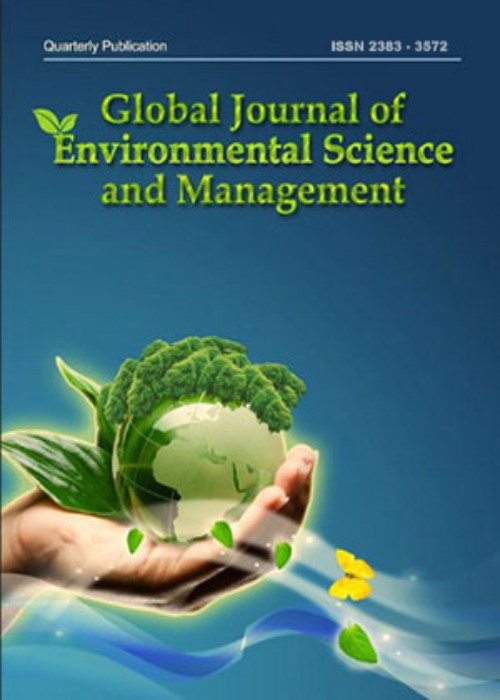Economic feasibility, perception of farmers, and environmental sustainability index of sorghum-eucalyptus agroforestry
Author(s):
. Komalawati * , S. Hidayat , R.H. Praptana , M.D. Pertiwi , A.S. Romdon , Y. Hidayat , R.P. Ramadhan , D. Yuniati , . Saptana , . Syahyuti , N. Khaririyatun , S. Ika , R.K. Jatuningtyas , . Subiharta , R.N. Hayati , S. Sudarto , M.P. Yufdy , B. Nuryanto , A. Prasetyo
Article Type:
Research/Original Article (دارای رتبه معتبر)
Abstract:
BACKGROUND AND OBJECTIVES
The Indonesian Government is promoting sorghum as an alternative commodity to substitute wheat. The cultivation of this commodity on dryland is initiated in forestry areas through social programs. This study aimed to analyze the economic feasibility, perception of farmers, and environmental sustainability of sorghum-eucalyptus agroforestry in Majalengka.METHODS
This study innovatively combined qualitative and quantitative methods to assess economic, social, and environmental aspects across five dimensions, namely business organization, actors, working mechanisms, economic impacts, and sustainability of business and environment. Data were collected through focus group discussions and interviews with questionnaires, containing 5 dimensions and 23 attributes. The data collected were analyzed using the revenue-cost ratio, Likert scale, and scoring formulation, as well as multi-dimensional scale method. The level of environmental sustainability status and leverage attributes were examined using the Rapfish program and Monte Carlo analysis.FINDINGS
Sorghum-eucalyptus agroforestry was economically feasible with a revenue-cost ratio value higher than one. Farmers’ perceptions regarding the five dimensions of sorghum-eucalyptus were positive except for the operational mechanisms, and business and environmental sustainability. A distinfuished area of unfavorable perception was the use of sorghum waste as a substrate for renewable energy. The environmental sustainability index for sorghum-eucalyptus agroforestry was categorized as low except for the economic (61.9) and actor (52.3) which attained the moderately sustainable. The results showed that the sustainability analysis using multi-dimensional scale could be used as a guide in formulating strategies for enhancing and developing sorghum-eucalyptus agroforestry in the future.CONCLUSION
The problems in this study were related to the institutional governance of agroforestry business. The inclusion of the community, government, and private sector was unequal in carrying out the sustainability function of each dimension. The challenge for the future was proper and sustainable management of development efforts to realize economic sustainability, add value for society, and ensure environmental sustainability in agroforestry areas.Keywords:
Language:
English
Published:
Global Journal of Environmental Science and Management, Volume:10 Issue: 2, Spring 2024
Pages:
657 to 682
magiran.com/p2670017
دانلود و مطالعه متن این مقاله با یکی از روشهای زیر امکان پذیر است:
اشتراک شخصی
با عضویت و پرداخت آنلاین حق اشتراک یکساله به مبلغ 1,390,000ريال میتوانید 70 عنوان مطلب دانلود کنید!
اشتراک سازمانی
به کتابخانه دانشگاه یا محل کار خود پیشنهاد کنید تا اشتراک سازمانی این پایگاه را برای دسترسی نامحدود همه کاربران به متن مطالب تهیه نمایند!
توجه!
- حق عضویت دریافتی صرف حمایت از نشریات عضو و نگهداری، تکمیل و توسعه مگیران میشود.
- پرداخت حق اشتراک و دانلود مقالات اجازه بازنشر آن در سایر رسانههای چاپی و دیجیتال را به کاربر نمیدهد.
In order to view content subscription is required
Personal subscription
Subscribe magiran.com for 70 € euros via PayPal and download 70 articles during a year.
Organization subscription
Please contact us to subscribe your university or library for unlimited access!


